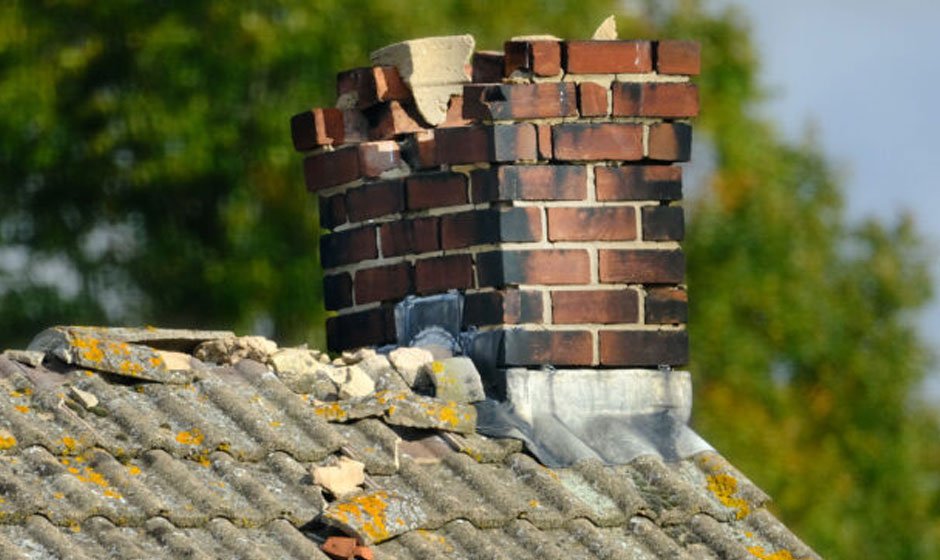Chimneys are essential components of many homes, serving as conduits for the safe venting of smoke and combustion byproducts from fireplaces, woodstoves, furnaces, and boilers. Nevertheless, over time, chimneys can deteriorate, posing various risks to a home’s structure and safety. Comprehending the most common causes of chimney deterioration is crucial for homeowners to ensure this vital feature’s proper maintenance and longevity. We will explore the primary factors contributing to chimney deterioration and discuss practical solutions to address these issues.
Primary factors contributing to chimney deterioration:
1. Moisture and Water Damage
Moisture and water damage are among the most prevalent causes. Water can enter the chimney through diverse pathways, such as cracks in the masonry, damaged chimney caps, and faulty flashing. Once inside, moisture can wreak havoc on the chimney’s structure and integrity.
The freeze-thaw cycle is a particularly destructive process. When water penetrates the masonry and freezes, it expands, causing cracks and fissures. As the cycle repeats, these cracks widen, allowing more water to infiltrate the chimney. Over time, this can usher to severe structural damage, including spalling (the flaking or chipping of masonry), deterioration of the chimney liner, and weakened mortar joints.
Solution: Preventing moisture damage is paramount. Regularly inspect the chimney for signs of water intrusion and address any issues promptly. Repair or replace damaged chimney caps, flashing, and sealing. Applying waterproof coatings to the masonry can also furnish additional protection against moisture.
2. Creosote Buildup and Corrosion
Creosote buildup is a common issue for chimneys connected to fireplaces or wood-burning appliances. Creosote is a highly flammable substance that forms when wood or other organic materials are burned. It can accumulate inside the chimney liner and flue, boosting the hazard of chimney fires.
In addition to creosote buildup, the byproducts of combustion can be corrosive. Over time, the acidic nature of these byproducts can usher corrosion of the chimney liner and metal components, such as the damper, flue, and chimney cap.
Solution: Regular chimney maintenance and cleaning are essential to address creosote buildup and prevent fires. A certified chimney sweep can inspect the chimney, remove creosote deposits, and assess the condition of the liner and metal components. Installing a stainless steel liner can offer enhanced corrosion resistance and safety.
3. Chimney Settlement and Foundation Issues
Chimney settlement and foundation problems can result from various factors, such as soil erosion, ground shifting, or inadequate support. As the chimney settles or shifts, it can usher to structural damage, including cracked masonry, tilted chimneys, and leaning stacks.
Settlement and foundation issues not only compromise the chimney’s structural integrity but also pose safety hazards, as they can influence the stability of the whole chimney structure.
Solution: Addressing settlement and foundation problems mandates professional assessment and repair. Consult a structural engineer or chimney specialist to evaluate the extent of the damage and determine the appropriate remediation measures, which may include underpinning or stabilizing the foundation.
4. Aging and General Wear and Tear
Like any part of a home, chimneys are subject to prevailing wear and tear over the period. Aging chimneys may experience deterioration of the masonry, mortar joints, and chimney cap due to exposure to the elements, temperature fluctuations, and the effects of combustion byproducts.
Additionally, seismic activity or vibrations from nearby construction can contribute to the gradual degradation of chimney structures.
Solution: Regular inspections and maintenance are paramount for pinpointing and addressing the effects of aging and general wear and tear. Tuckpointing, which involves replacing damaged mortar joints, can help restore the chimney’s structural integrity. If extensive damage has occurred, chimney rebuilding or restoration may be necessary.
5. Lack of Proper Chimney Maintenance
Perhaps one of the most preventable causes of deterioration is improper maintenance. Many homeowners neglect routine chimney inspections and cleaning, which can lead to the accumulation of creosote, moisture damage, and structural issues going unnoticed.
Regular chimney maintenance is crucial for addressing issues as they arise and ensuring the safety of the chimney and fireplace or stove.
Solution: Establish a regular chimney maintenance schedule that includes annual inspections and cleaning by a certified chimney sweep. These professionals can assess the condition of the chimney, remove creosote buildup, and pinpoint any potential issues before they escalate.
Understanding the common causes of chimney deterioration is essential for homeowners to protect their homes, ensure safety, and prolong the life of this vital structure. Moisture damage, creosote buildup, structural settlement, aging, lack of maintenance, chimney fires, and environmental factors are among the primary contributors to chimney problems. Homeowners can mitigate these issues by implementing regular inspections, cleaning, and necessary repairs and enjoy the benefits of a safe and efficient chimney system for many years. If you are facing chimney issues, Willard Power Vac specializes in chimney repair in Portland.

